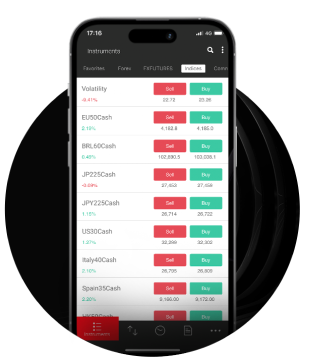The US Dollar Index has gained ground as odds of a Fed rate cut in December have diminished. The US dollar began the week (17 -21- Nov.) on a firmer footing, extending last week’s rebound as investors reassessed the likelihood of a Federal Reserve rate cut in December.
Across G10 and emerging market FX, the Greenback is broadly stronger, supported by hawkish Fed rhetoric, softer global risk sentiment and renewed geopolitical tensions in Asia.
According to the CME FedWatch tool, financial markets are now pricing in a 46% chance that the Fed will cut its benchmark overnight borrowing rate by 25 basis points (bps) at its December meeting, down from the 67% probability that was priced in a week ago.
US dollar climbs
The US Dollar Index (DXY) climbed this week after touching two-week lows last week. Investors have pared back expectations for a 10 of December Fed rate cut, with the probability falling to roughly 44%, a dramatic retreat from 94% just one month ago.
December Fed rate cut
The rate-setting Federal Open Market Committee is meeting on the 9 -10 Dec. but markets are divided over which way the panel will swing two 25 basis point cuts at meetings in September and October.
Fed officials including Bostic, Logan, Schmid, Kashkari, Musalem, Hammack, and Collins pushed back against premature easing, arguing that inflation risks remain elevated despite cooling labour indicators.
Kansas City Fed President Jeffery Schmid said on Friday that monetary policy should “lean against demand growth,” and added that Fed policy is “modestly restrictive,” which he thinks is appropriate. St. Louis Fed President Alberto Musalem said last Thursday that rates are now closer to neutral than restrictive and the US economy remains resistant. Musalem highlighted the need for caution, noting the risks of easing to overly accommodative policy.
Christopher Waller in favour of rate cuts
Still, not all Fed officials are concerned, with Fed Governor Christopher Waller who is one of the five contenders for the next Fed chair supporting further rate cuts.
Waller explained that inflation is not an issue, but the US labour market remained weak and almost near stalling. He highlighted that declining labour demand was due to the downward pressure on wages, decreases in vacancies and lower quit rates which revealed low job-creation numbers and said that cutting the funds rate by another 25bps at the next meeting on the 10 of December (45%priced-in) was appropriate.
Vice Chair Philip Jefferson was guarded about the upcoming meeting but noted that the current economic climate requires policymakers to proceed slowly, while Boston Fed President Susan Collins said Wednesday that she sees a “high bar” for more monetary policy easing.
Governor Stephen Miran was in favour of half-point rate cuts at the prior two meetings.
While Waller has spoken out in support of further rate cuts, he was careful to mention recent developments such as weak demand and pressure on consumers. He also explained that price data revealed that tariffs will not have a long-lasting impact on inflation. Cutting rates again will be an exercise in “risk management,” an expression also stated by Chair Jerome Powell.
Waller said: “I worry that restrictive monetary policy is weighing on the economy, especially about how it is affecting lower-and middle-income consumers”. He added: “A December cut will provide additional insurance against an acceleration in the weakening of the labour market and move policy toward a more neutral setting.”
Waller underlined the current and unusual split among policymakers and explained that while dissent is healthy if policy votes become too “razor-thin” this could challenge investors’ ability to form an accurate outlook about future interest rates.
He said that dissent “doesn’t mean anything about the chair’s leadership … The only problem is if it gets down to 7 to 5, then one person switches at the next meeting, the whole trajectory changes. That’s kind of a danger … It doesn’t give people confidence” when it comes to monetary policy.
He also defended the Fed and any exaggeration regarding their presumed inability to proceed to a decision to cut rates. He clarified that Fed officials had plenty of private and public-sector data on the US economy including payroll processor ADP, state government unemployment claims, and surveys from various groups like the University of Michigan.
Because of the shutdown, the release of core economic data, including the September jobs was delayed, while weaker consumer sentiment was due to stretched family budgets following housing and other major costs.
Trump and the next Fed Chair
In an Oval Office interview on Tuesday, US President Donald Trump said that he “would love” to remove Fed Chair Jerome Powell immediately. Trump said that he already had a candidate in mind and added that there were “some surprising names” under consideration. The administration may ultimately go for a more traditional option, he explained.
Whoever replaces Jerome H. Powell will be closely scrutinised especially after Trump has repeatedly attacked the central bank’s current leadership and its inability to deliver more interest rate cuts.
Trump insists that the next chair will be able to cut rates and this has immediately created doubts about how credible they might be. Investors and economists said that Trump has undermined the next Fed chair by attacking the central bank and that it will be hard for the next chair to decide on the right policy settings if these go against the president’s wishes.
Officials remain divided on the timing and the extent of additional easing this year. But as Riccardo Trezzi, a former Fed economist said, if Trump chooses a puppet as a Fed chair, “what happens is that the long end of the yield curve will not go down, it will go up because the markets will start pricing in permanently higher inflation.”
Short-term outlook
The dollar’s advance may persist as long as Fed officials maintain a cautious stance and US data fails to support near-term easing.
With geopolitical tensions simmering and monetary policy trajectories diverging across regions, FX markets are prepared for increased volatility as the week unfolds.
免责声明: 本信息不被视为投资建议或投资推荐, 而是一种营销传播. IronFX 对本信息中引用或超链接的第三方提供的任何数据或信息概不负责.
















